Tucked away on a side street and hidden away amongst massive steel buildings is St Dunstan-in-the-East. It is by far one of the most unique public gardens I’ve visited. Not only is this beautiful garden right in the middle of the bustling city of London; but, this green oasis has been built inside a bombed out church. Even after a good rain this peaceful little garden is the perfect backdrop for some moody Instagram photos.
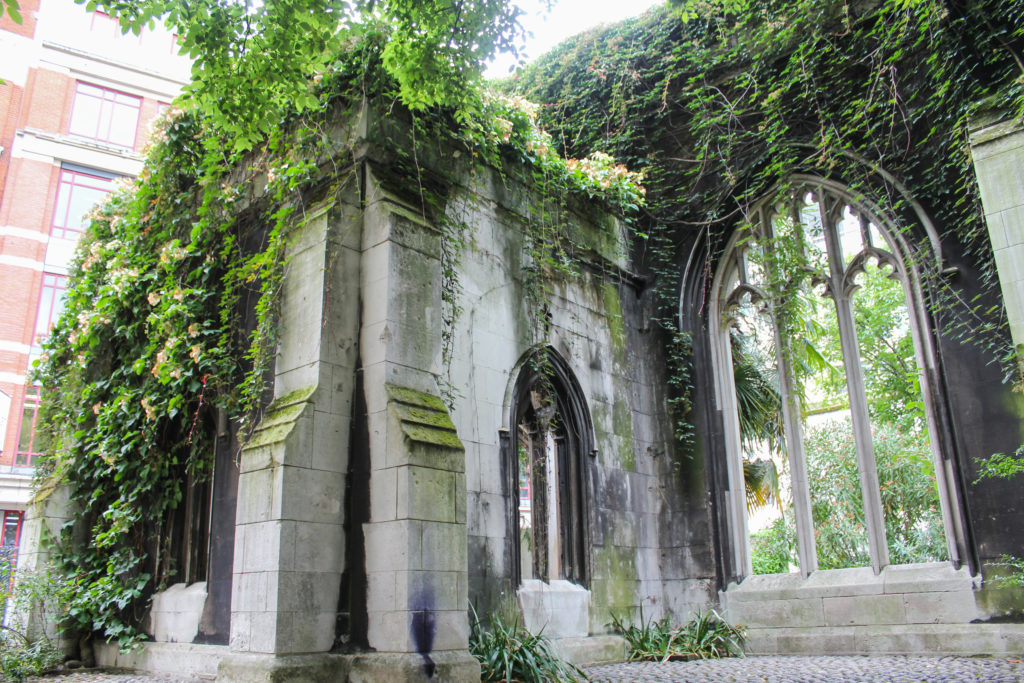
St Dunstan-in-the-East
The church was originally built around 1100 and was named after the much-loved Saint Dunstan. Saint Dunstan had an interesting life, he was an accomplished silversmith and artist. There are many legends about Saint Dunstan from being accused of black magic to having cunningly defeated the devil on a few occasions. It’s thought that the myth of hanging a horseshoe above your door to bring good luck comes from one of their encounters. Saint Dunstan later went on the become the Archbishop of Canterbury. Much like its namesake the church has also had an interesting past.
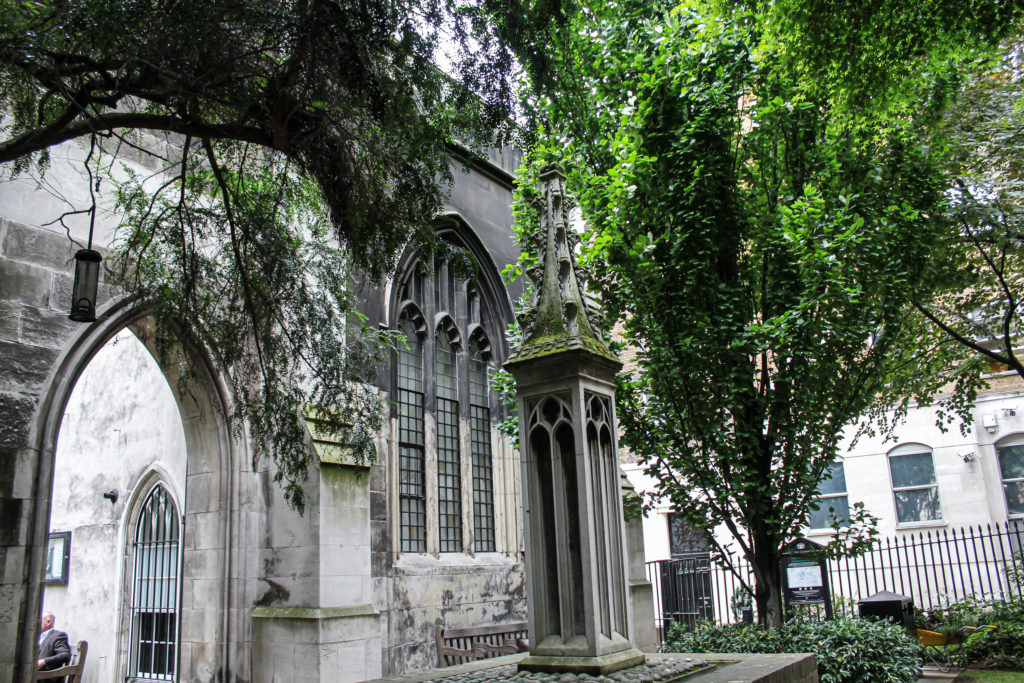
The Great Fire
The first 500 years or so were relatively uneventful. The church underwent the normal additions and repairs. In 1666 however, a fire broke out in a bakery on Pudding Lane. The fire quickly spread and burned for four days. The City of London was destroyed by what would become known as The Great Fire of London. St Dunstan-in-the-East was badly damaged during the fire. It was decided that the damage done would be patched up instead of being fully rebuilt. Repairs to the church lasted from 1668 to 1671.
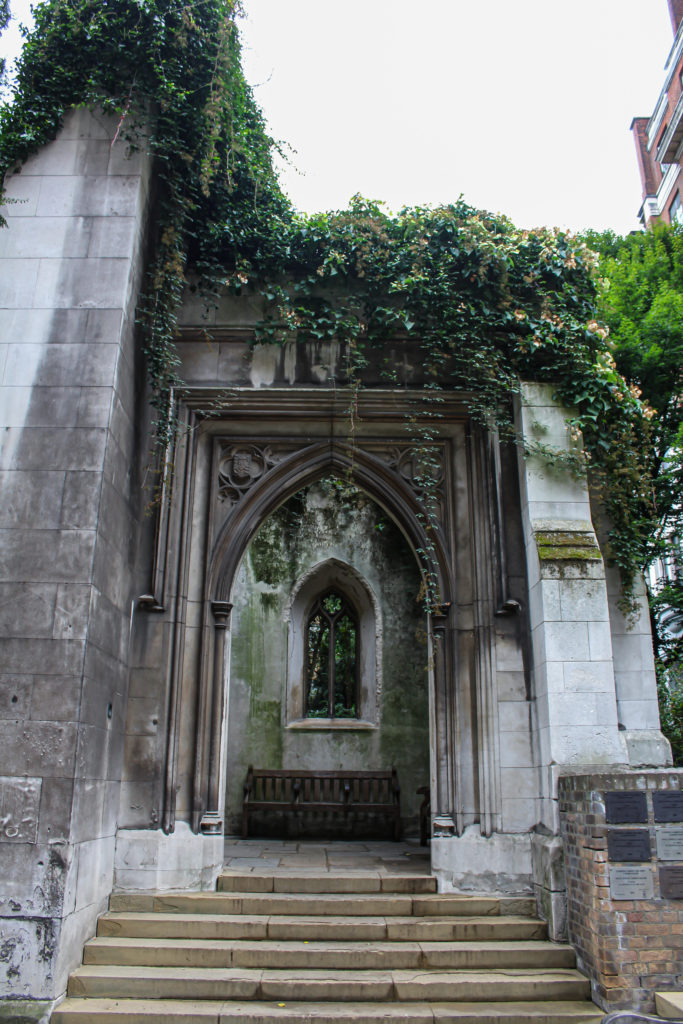
After the Fire
Between 1695 and 1701 a new steeple was added to the church. The steeple was designed by renowned English architect Sir Christopher Wren. Wren is probably most known for having designed and built St Paul’s Cathedral. In 1817 it was found that the weight of the roof of the nave was causing the walls to lean. The walls leaned by as much as seven inches from where they were meant to be. The decision was made to rebuild the church. Construction ended in 1821 and Wren’s steeple and tower remained.
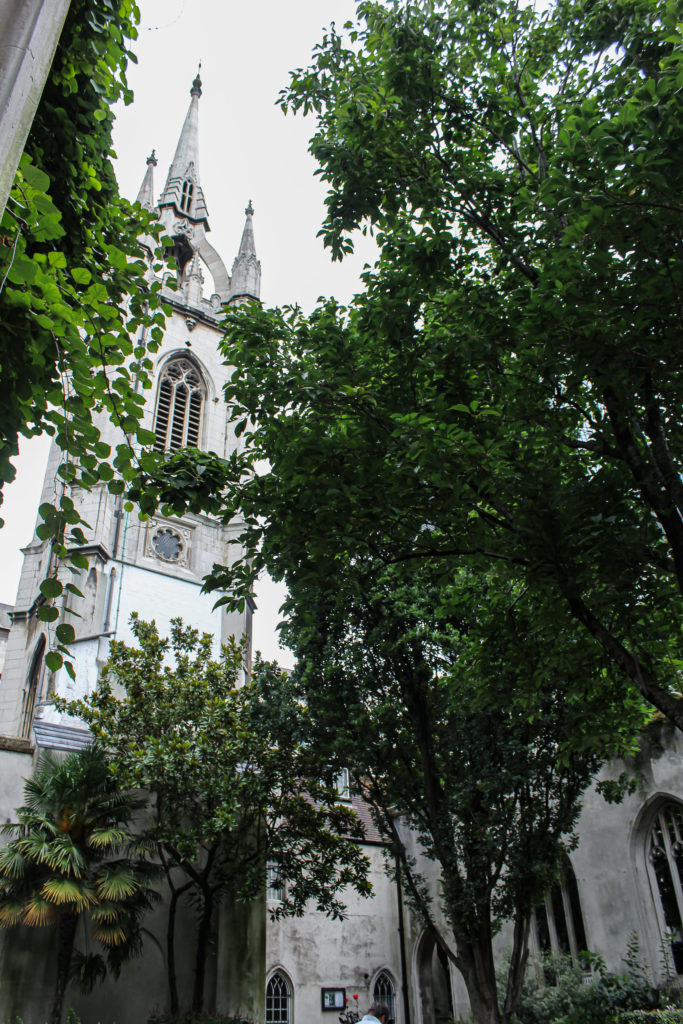
The Blitz
In 1939 the Second World War broke out. For eight months between 1940 and 1941 London was a target for German air raids. During one of these campaigns London was systematically bombed for close to 60 days straight, most of the attacks occurred at night. The capital was hard hit with thousands of lives lost and about a million homes destroyed. St Dunstan-in-the-East was severely damaged during The Blitz. All that remained of the church was the north and south walls as well as Wren’s steeple and tower.
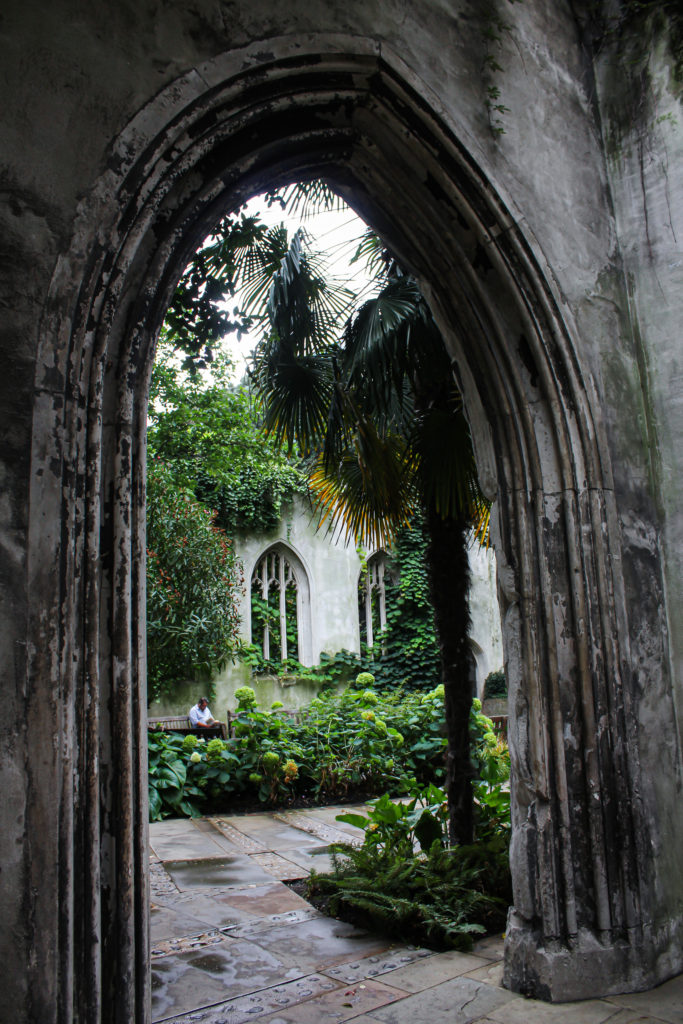
Becoming a Garden
After the war, the Church of England decided they could not rebuild St Dunstan-in-the-East and abandoned the site. The shell of the church sat unused until 1967 when the City of London decided to turn it into a public garden. The garden officially opened in 1971. A haven inside a bombed out church, a reminder of the not so long ago war times.
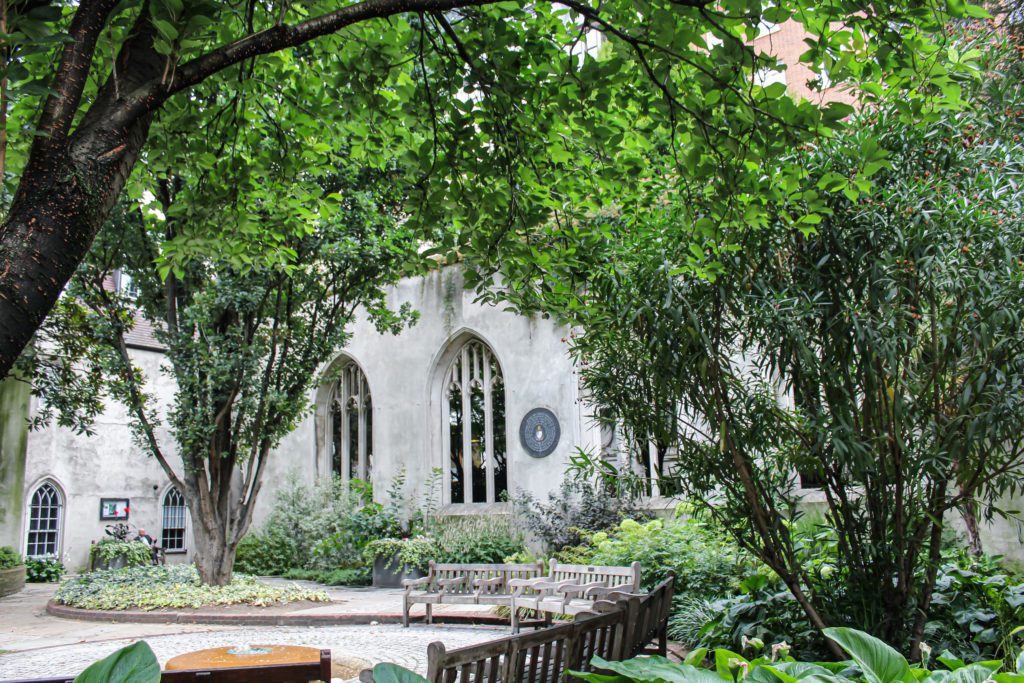
Getting There
St Dunstan-in-the-East is located on St Dunstan’s Hill, half way between London Bridge and the Tower of London. The two nearest tube stops are either Monument or Tower Hill, both served by the Circle and District lines. From either of these stations it is just a short walk to the garden. You can enter the garden from Idol Lane or St Dunstan’s Hill.
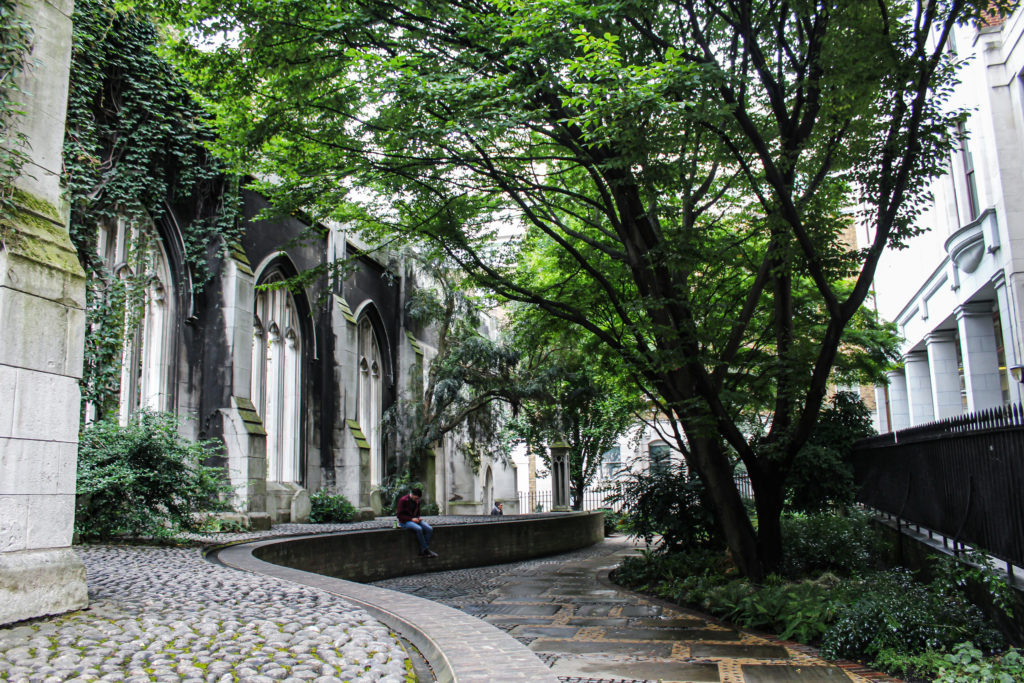
The hidden gardens at St Dunstan-in-the-East provide a sometimes much needed break from the hustle and bustle of London. Most of London has been rebuilt and modernized after the war. Not many bomb sites still exist. St Dunstan-in-the-East makes for a unique stop on anyones itinerary.
So last week, I finished up my feature on Venice. This week, and in the weeks to come, I’m going to be featuring some of my favourite spots from past travels. So keep an eye out for posts from a variety of places. I’ll be talking about everything from Cuba to Morocco. To stay tuned and up to date you can follow along on Facebook, Instagram, and Twitter. If you would like to see more photos you can check out my Pinterest where I have everything organized into boards based on each trip, or check out my new Instagram story highlights.
See you next week!
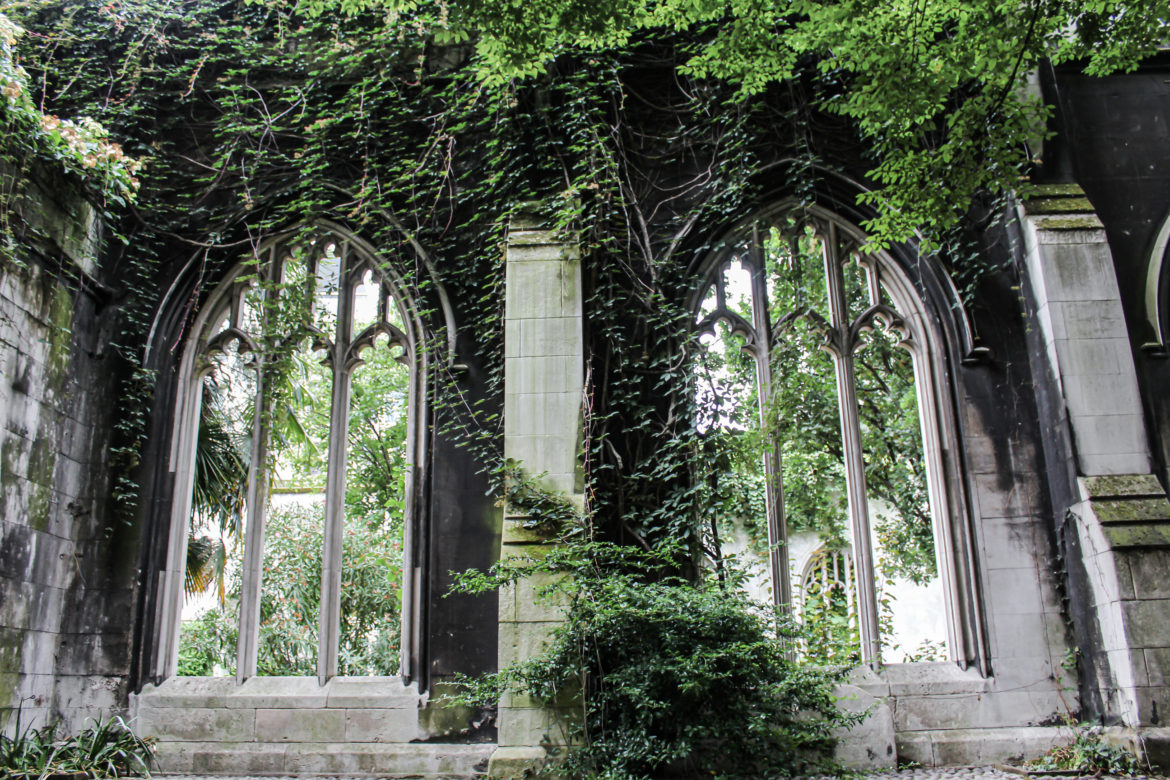
I have visited London many times but this is a surprise to me. Perhaps St Paul’s is the go to place for most visitors. Very interesting article Calli. Keep them coming.
I’d only kind of heard about in passing one of the last times I’d been. I was surprised that I’d beed to London like three times already and had never heard of it. It is definitely a hidden gem.